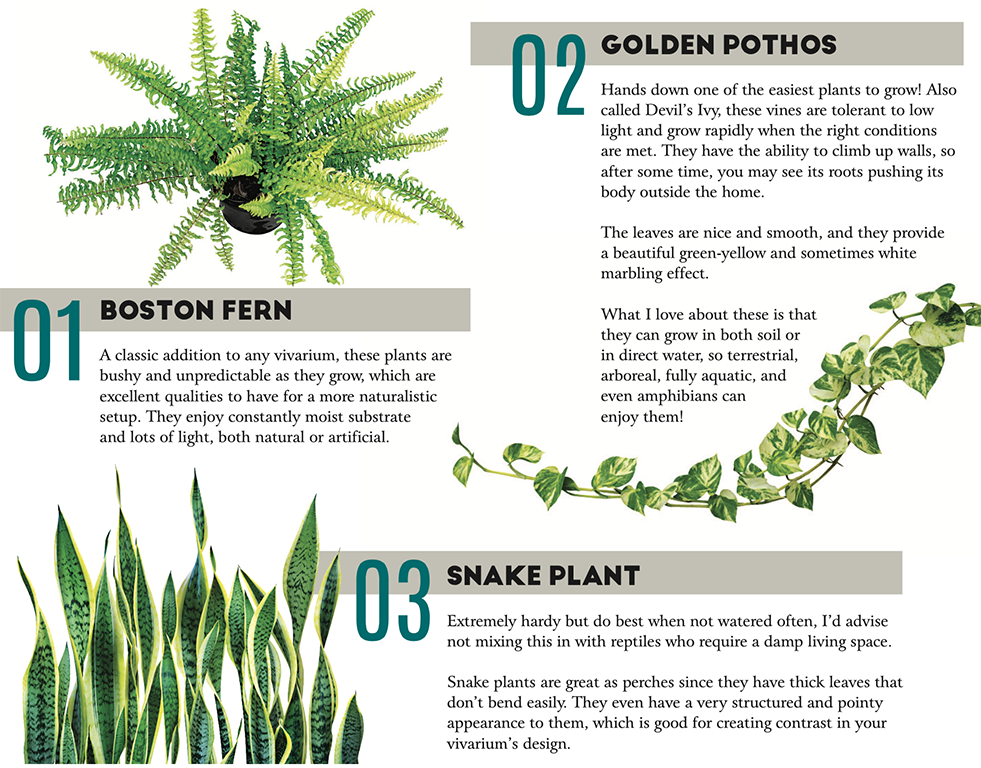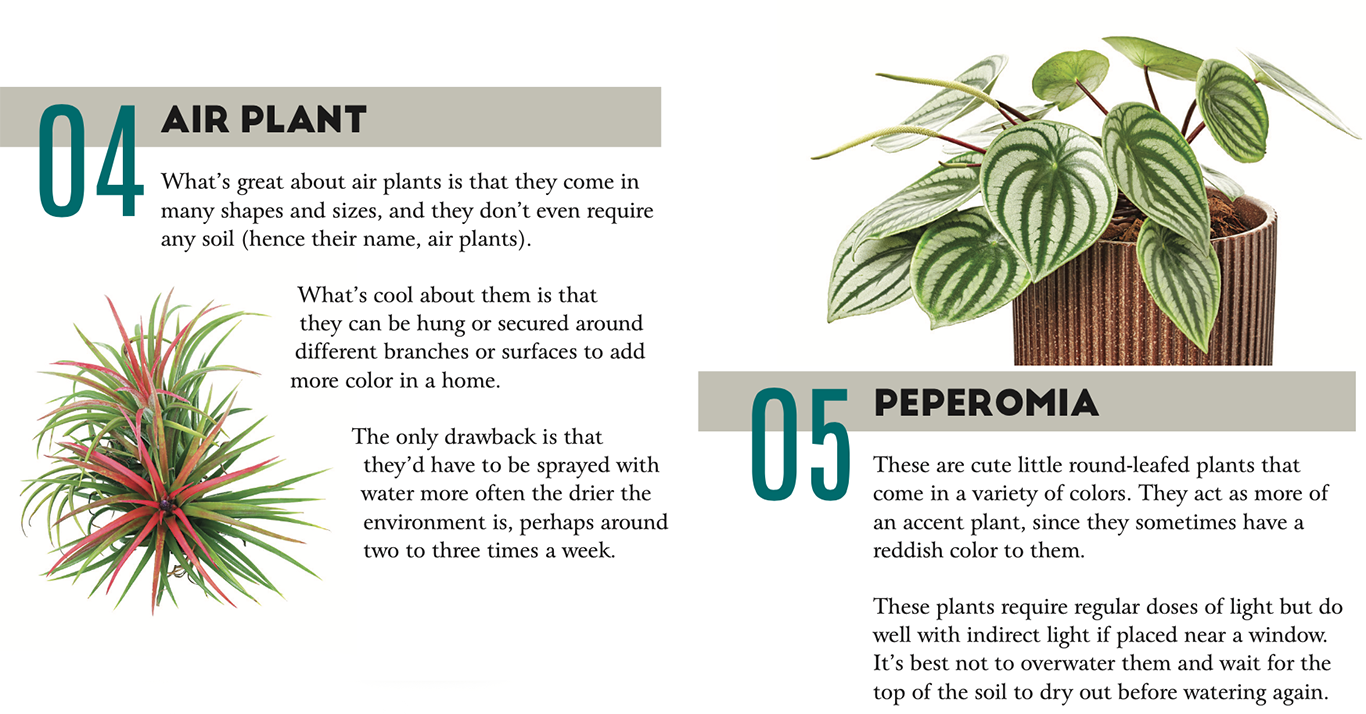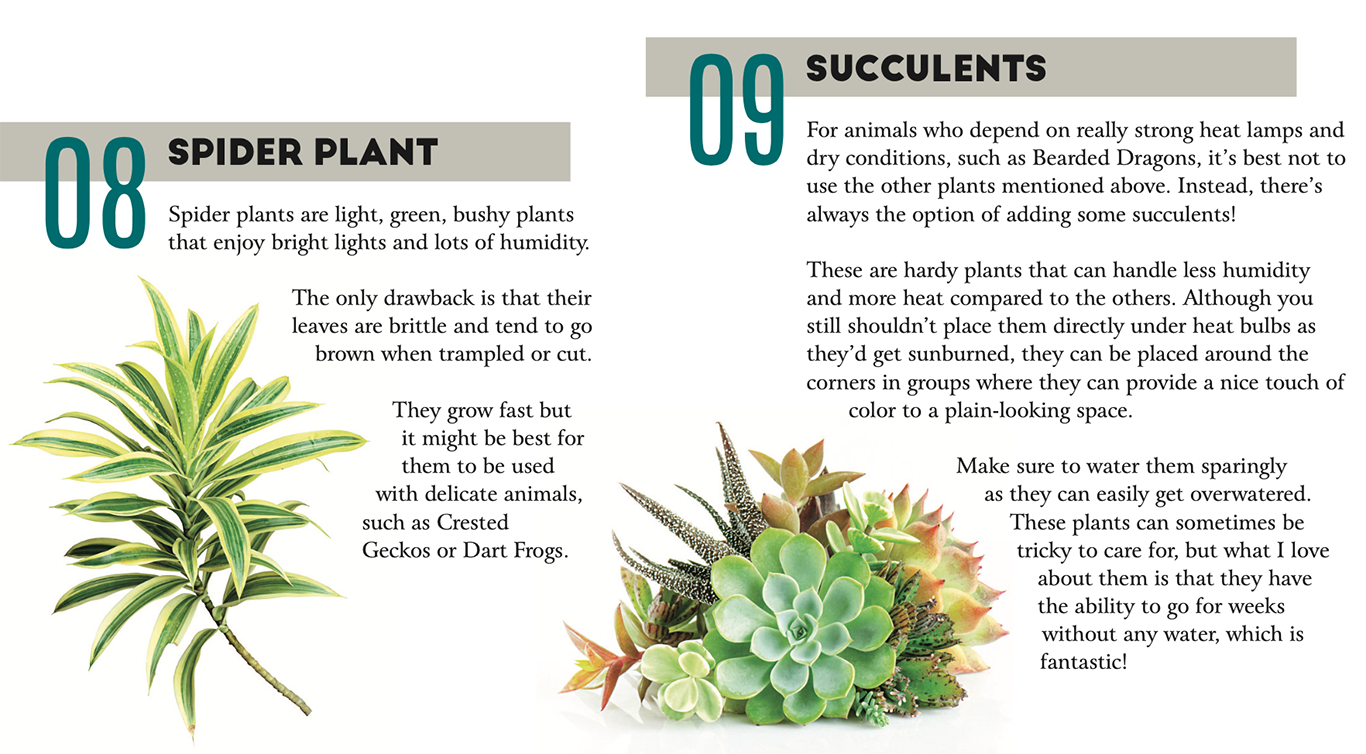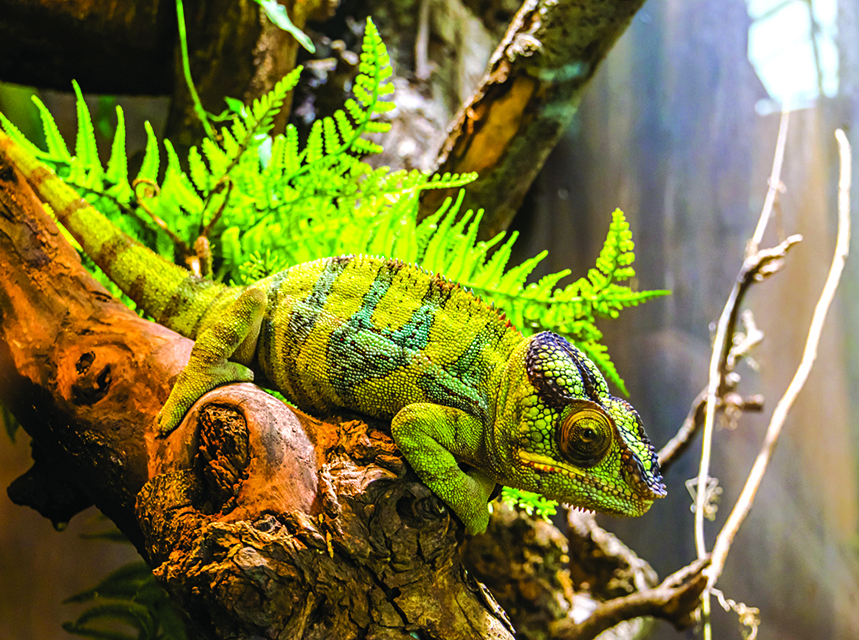Adding a bit of green inside a terrarium is an easy way to level up a reptile’s home. Not only does placing plants make it look and feel more natural, but it also provides a good number of benefits that both humans and animals can enjoy!
PLANT POWER!
Besides being aesthetically pleasing, plants help increase humidity, provide additional hiding spaces that help animals feel more secure, and improve air quality within the home. They even encourage a more bioactive environment by providing conditions suitable for isopods and other “natural cleaner bugs,” such as Springtails and Worms, to thrive in — and this lessens the need to regularly deep clean their spaces.
WHO WANTS THE GREENS?
Many small animals, such as Crested Geckos, various Frogs, Chameleons, small Snakes, Blue-Tongued Skinks, and most Turtles, would greatly appreciate having a living space with a bit of plant life inside.
Sadly, a space filled with delicate plants isn’t for everyone, regardless
of whether or not their species naturally comes from a rainforest-like environment. Take Green Iguanas (Iguana iguana) for example. They too would enjoy all the bushy greens and humidity, but having a large herbivore lizard within a relatively small home with not much leg room would be disastrous as they would bulldoze through their new garden by accident.
Same goes for tortoises and Sailfins. In general, places with lots of plants should only be used for small reptiles, amphibians, or invertebrates.
HOUSEPLANTS TO TRY
Not many people know this, but there’s actually quite a lot of common houseplants you can add to a vivarium that are both non-toxic and readily available!



THINGS TO CONSIDER
There are hundreds of plants you can add to a vivarium but always assess whether or not they are suitable to use with the species you are caring for.
Make sure they are non-toxic — this means that these plants shouldn’t give animals an allergic reaction or irritate their eyes, and they have to be safe if ingested in small quantities.
Check to see that they are free from pesticides, herbicides, and growth-regulating hormones. Find out if their growing conditions match the kind of environment the reptile naturally lives in. Stick to organic or reptile-grade substrates for the soil, and use things like cocopeat, ecoearth or a mix of the two.
As much as possible, I’d advise not mixing
in a lot of plant life with reptiles who are primarily herbivores as they may end up eating the plants. As an alternative, you may opt to use plastic plants if you would still want the terrarium to look greener.

SAFETY FIRST
Plants are great, but always be sure that whatever you add is safe for your animal companion, as it is your responsibility as their caretaker to give them a long and happy life to the best of your capability.
Have a great time designing your reptile’s new home!






